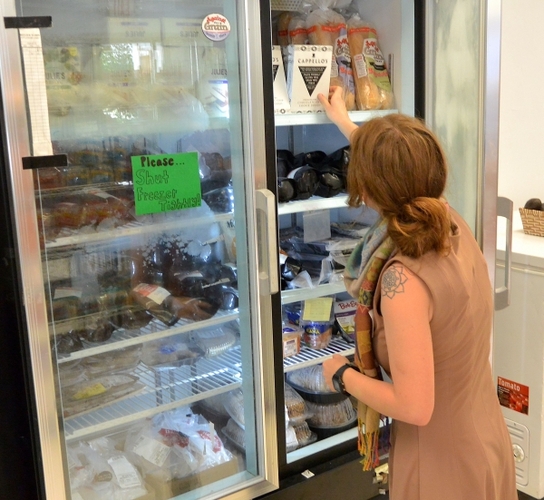BRATTLEBORO — Stephanie Bonin and Zach Hebert are part of organizations from throughout Windham County that have met throughout the year to work on Everyone Eats!
The good news, said Bonin, is that funding for the statewide Vermont Everyone Eats! program has been extended until Dec. 31. Previously, funding was set to end a few weeks earlier.
Yet, the federal emergency COVID-19 funding will end, it seems, long before the pandemic or its economic impacts.
Hebert said the momentum around increasing access to food in Windham County has built throughout the year. He hopes if programs like Everyone Eats! are paused due to funding, that the momentum will keep moving forward. People will still need food.
“I think everyone recognizes certainly that the end of the tunnel is far away,” he said. “Like, the light is not anywhere near.”
According to a survey conducted by the Gund Institute for the Environment at the University of Vermont, one in four Vermonters now experiences food insecurity. This number reflects more than double the rate of pre-pandemic food-insecure households.
The survey also found that Vermonters most likely to access food pantries included people without a college degree, people of color, people with children, people receiving unemployment, and people who are out of work.
Foodworks Coordinator Christine Colascione said that the number of people the pantry is serving has almost doubled compared to last year. The number of people requesting home delivery has also increased.
She noted that more people are accessing the Brattleboro-based food pantry because they need food. But the number of people who crave community connection has also increased, she added.
The food shelf, a division of Groundworks Collaborative, switched to a curbside-pickup food-distribution model early in the pandemic. In so doing, it removed the communal experience of visiting the food pantry and thus the opportunity for connection from interacting with others, she added.
Colascione said that prior to the pandemic, Foodworks placed few restrictions on who could access the pantry. Since March, the food pantry has removed all restrictions.
Despite the increase in need, Colascione said the amount of food available to Foodworks has also increased. So far, the pantry has had “as much food as it's needed.”
The Vermont Foodbank is also providing food free to food pantries, she said, and donations from local grocery stores have also increased. She said it's unclear whether more food is remaining on the shelves unpurchased - and eventually donated - because fewer people are able to afford to buy food at the store.
Vermonters also have more ways to access food through direct distribution programs such as Everyone Eats! or Farmers to Families, she said.
Still, Colascione expects the increased amount of food available to the charitable food system will eventually dwindle, especially if the federal government decides against a second COVID-19 economic relief package. Vermont Everyone Eats! was originally funded by federal economic stimulus legislation in the early days of the pandemic.
Should funding run dry, Colascione expects more Vermonters will turn to their local food pantry.
“We don't know what's going to happen, but we're planning for the worst and hoping for the best,” she said.
Foodworks is also offering a Thanksgiving turkey distribution. Community members can reach out to the food pantry to learn more by emailing Colascione at [email protected] or calling 802-490-2412.
Lisa Pitcher, director of Our Place Drop-In Center in Bellows Falls, said the number of people using the local food pantries in the northeast section of the county has decreased. At this point, she believes the drop is due to the increase in the number of food distribution sites.
“I don't think we have a really good sense of the people we're not reaching,” she said.
Pitcher stresses that COVID-19 and the economic upheaval it unleashed on many households did not cause food insecurity in Vermont. In her experience, she has seen fewer Vermonters leaning on the charitable food system in emergencies. Rather, Pitcher has seen families relying on it to provide daily meals.
“[COVID-19 is] changing the conversation because people are seeing the vulnerability in our system more clearly,” she said.
Often people refer to the for-profit food system and the charitable food system as separate entities, when they are one system, she said. And because of that interconnection, what happens to one impacts the other.
Pitcher praised the food distribution programs that have emerged during the global pandemic.
Yet, for Pitcher, these programs are not always efficient or dignified. And, she points out, as long as Vermonters are earning low wages, then the state will have a charitable food system.
“People need money to buy the food they need in a way that is more dignified and efficient,” she said. “It's heartbreaking, it's disgraceful, and we can do better.”
